#US Food Additives Market
Explore tagged Tumblr posts
Text

0 notes
Text
[image description: "you just die #fear is the mind killer, boomers have... a lot of fear #a lot of fear and hurt that they don't examine or know how to examine and it bleeds through #something something 'it all traces back to trauma' #it... we talk about this a lot" end ID]
I mean, we knew, but it's nice to hear so succinctly
#yesss Eastern European perspectives!#our world was/is falling apart repeatedly & further reinforcing maladaptive thought patterns#my grandparents were born in the 1910s and my parents in the 1940s#so chronologically: childhood trauma of WW1 in the 10s; young adult trauma of interwar Poland; WW2 and camps and resistance#then years of postwar Stalinism with its witch hunt for wrongthink that instilled an even stronger need for secrecy and self-reliance#then things were looking slightly up but after March 1968 a lot of people suddenly became too Jewish to keep their jobs/stay in .pl#/then/ Gierek started taking loans from capitalist countries due to shortages of food and p much everything else#now we're getting to the 80s with the threat of russian invasion if gov.pl didn't suppress worker protests ->#secrecy and self-reliance coming in handy again; my family taught me those as a small child#and then the gradual weakening of the Soviet bloc culminating in the events of 1989#[the process was pretty peaceful out here unlike in the Balkans forex - we don't have this additional layer of war trauma & distrust]#THEN shiny new capitalism: sink or swim because the new gov.pl won't bail you out you lazy postcommunist parasites#workplaces folding; public transport cuts; vulnerable populations going hungry again; dismantling of support systems#other end of the spectrum: abundance if you could afford it: no more rationing; exotic fruit in stores year-round; internet; opportunities#my family managed to stay afloat; Poland joined the EU in the early 2000s and people could work abroad legally#[not immediately ofc; a few western countries deferred it by a few years to protect their job markets from filthy postcommie migrants]#then in 2015 the exchange rate on the foreign currency people liked to take out loans in skyrocketed basically overnight#then 8 years of rule of religious nationalist xenophobic insular politicians#then covid#then full-scale invasion of our neighbor Ukraine by an empire our nations have feared/been impacted by for centuries#and now the impact of climate change is getting impossible to ignore even for professional denialists#that's decades of being traumatized and retraumatized and picking up the pieces#like. all of us in EE have really solid reasons to be fucked up and traumatized#the <1960 generations and the >2000 generations and everyone in between#as access to knowledge/education [even if superficial] is vastly easier now...#we actually notice this trauma and fucked-upness instead of internalizing it resignedly like 'oh well life is supposed to be shit'#ugh#why must we live in interesting times
48K notes
·
View notes
Text
FDA Affirms Its Decision to Remove 25 Plasticizers From the Food Additive Regulations
In a continuation of the US Food and Drug Administration‘s efforts to conduct post-market reviews evaluating the continued use and safety of chemicals authorized in its regulations, the agency is removing decades-old clearances for food-contact materials based on evolving toxicology concerns. Specialty chemical companies should take note of the development as an example of the way FDA may respond…
#chemicals#FDA#Flexible Vinyl Alliance#food additive regulations#food contact materials#National Resource Defense Council#NRDC#ortho-phthalates#post-market reviews#US Food and Drug Administration
0 notes
Text
How to Shop at an Asian (or other ethnic) Grocery Store
Do you live in or near a city in the US?
Need to save some money on groceries?
Might I introduce you to... shopping at the local Asian grocery?

Asian grocery stores aimed at an Asian-American customer base almost always beat the prices of their western (or for-western) counterparts. Often by a significant amount, especially in categories like produce, meat, rice, and spices. Plus in addition to lower prices, you get the satisfaction of supporting a small, local business instead of a larger chain store.
(Note that a lot of this information applies to other ethnic grocery stores as well, but we're using Asian because they're common in many cities, and have particularly good prices on produce.)
But it can be a little bit of a learning curve when you first start to shop at them. This post will give you the information you need to navigate them.
So how do you find a good Asian grocery store?
First, go on google maps and search "grocery".
Note that you are NOT googling "Asian Grocery" or "Cheap Grocery". If you search "Asian Grocery" you will get results for Asian stores marketing toward a western audience, and because of this, will be neat, shiny, and very pricey. If you search "Cheap Grocery" you will get stores marketing themselves as cheap, which generally are only slightly less expensive than their "expensive" counterparts (think Aldi). Okay in a pinch, but you can do better.
Second, look at the pictures of all the stores you can easily get to.
Here's what you want: not a lot of printed ads, pictures of hand-written signs (especially in languages other than English), food in cardboard bins, and you want it to look kind of "junky". Bonus points if you can see prices listed in the pictures or the people shopping there are mostly older, ethnic women.
Third, If you couldn't find anything like this, go on your city's subreddit.
Search "cheap", "cheap grocery" and "expensive grocery". Why "expensive grocery"? Because you want to find people complaining about grocery prices, and you want to see the advice they get. Many times, that advice is Asian or ethnic grocery stores.
If you're still not getting anything, google "[city name] cheap grocery" and "[city name] expensive grocery" (see above). Scroll until you get to FORUMS discussing groceries in your city. You DO NOT want blogs or articles. Again, you're looking at the advice people are given when they complain about grocery prices.
One of the first questions people ask upon walking into an Asian grocery store of the type discussed in this post is:
"Is the food I'm getting here safe to eat?"
The answer is just as safe as anywhere else you might shop.
You're probably used to very clean, pretty, well-lit, well-organized stores. This will probably not be that, but it will be regulated by the same health department that regulates those stores. They are held to the same standards.
It's a lot of work to keep a store looking like a western consumer expects. It's a lot less work (and thus less money) to keep a store looking like an ethnic career housewife or grandmother expects. That is largely where the savings comes from.
What's a good deal at an Asian grocery?
Produce. You're probably used to things like onions and carrots being the cheapest per pound. Here it's going to be greens, apples, pears, radish, cabbage and maybe squash and sweet potatoes. Check unit prices and prepare to try some new things. Also a pound of greens is a LOT of greens. Keep that in mind. Also keep in mind that you might see a few pieces of produce that are bruised or have mold on them. That's okay. Just don't buy those pieces. The rest of the batch is probably fine. Wash produce when you get home if you're concerned, though you should be doing that anyway.
Rice and dry beans. If you like to buy in bulk, you're in luck. Don't expect to walk away with a pound or two of these. They come in 40lb packages. But if you tailor most of your meals around them, those meals will be cheap af. There are also lots of different types of specialty rice if you want to make your own sushi or mochi. Learn how to soak and sprout beans.
Tofu. Tofu is expensive when you buy it at a health food store. It is not when you buy it at an Asian grocery. It probably won't be in pretty packages, but again, cheap is not going to be super pretty.
Meat and fish. Meat is generally going to be cheaper here, though maybe not by as much as the produce is. Pork will probably be your cheapest option. You may also see cuts you don't normally see, like tongue, intestine, liver, kidneys, blood, etc... "Weird," however, does not automatically mean cheap in this context. Check unit prices and prepare to be adventurous. If you don't know what else to do with them, dried fish and animal organs make fantastic stock when boiled.
Spices. Again with the extremely large quantities here. But very inexpensive compared with their western counterparts.
Candy. This makes a great inexpensive gift if you need one, since the candy sold at these stores is fairly exotic for a western audience.
What isn't a good deal at an Asian grocery?
Dairy. This includes fresh milk, butter, cheese, etc... If they have it, it will be very expensive. Consider buying elsewhere.
Eggs. Again, this will probably be as expensive or more than the eggs you could get at a western supermarket.
Snacks. Pre-made items will be expensive in general, even though they may be tempting because they are different from what you are used to and you don't need to learn to cook a new thing. Do your best to avoid these and make your own if you can. If you can't, frozen pork or vegetable dumplings are probably your best bet for a quick meal.
Bread. It's pricey. A lot of Asian cuisines use rice, noodles, or buns for their starch instead of western-style bread. So if you can find it it will often be a novelty item.
What else do I need to know?
It's okay to be overwhelmed by new ingredients. Look up some YouTube videos on how to cook certain ingredients if you're not familiar with them.
These are not supermarkets. They sell food and sometimes the kitchenware (steamers, woks, chopsticks, etc...) needed to cook it. You will probably need to get your soap and household items somewhere else.
Pay in cash if you can. Most of these are very small businesses and paying them cash makes it so they don't need to pay credit card fees. At the very least, make the minimum purchase before paying with a card.
3K notes
·
View notes
Text
I have to have a chuckle at the Screenrant article posted recently about the Galactic Starcruiser, which totally wasn't about Jenny Nicholson's video honest.
In part, because early in Nicholson's video, she talks about how unnatural it is to have your influencers speak in adcopy and copyright rather than the more colloquial nicknames, and how it makes the people speaking about the product seem very insincere and, well, paid off. Because normal humans don't speak that way, but advertising does.
What's the first two lines in this article?
"As a life-long fan of Star Wars, there was nothing quite as exciting as finding out that I would be working on the immersive Star Wars: Galactic Starcruiser experience. Located at the Walt Disney World Resort, the Galactic Starcruiser opened on March 1, 2022, and welcomed passengers to board a two-day, two-night cruise through the stars, during which they could live out their own Star Wars adventure."
No one talks like this naturally. No one writes like this naturally.
This is supposed to be your passioned defense of the place you worked at, the people you worked with, and the memories you made along the way. C'mon! Why don't you open with a story, perhaps an anecdote about the best moment you had working there, or the devastation of the day you lost your dream job. We need to feel your humanity! But there's nothing of that here, to the point where you can just hear the TM behind Galactic Starcruiser.
The first half of this article continues in this vein, reading like a press release Disney marketing put out, just with past tense rather than present or future tense:
"Essentially, the Starcruiser experience was a 48-hour movie that passengers were actually a part of. It was all facilitated through the "datapad," which was accessed through the Play Disney Parks app."
"To facilitate the overarching immersive experience and storytelling, the Starcruiser built a jam-packed itinerary for each and every guest that would consist of a variety of important activities: the captain's toast at muster, a bridge training exercise, lightsaber training, and more. These types of events were essential to understanding what was happening, as they would give passengers the chance to interact with characters and build their story. This is why the Starcruiser could never be just a hotel; every part of it was designed for enthusiastic interaction."
Like, c'mon. I used to work in television. I've seen and used adcopy in my former job, and this is some serious adcopy. It honestly wouldn't shock me if the author dredged up some old adcopy they had lying around about the topic and just transferred it over, changing the tense. You're not here to sell us this product, because there is no product to sell. It's gone, it's been gone for a year, you don't have to sell us on IT. Speak about your experiences.
The next part is yet another topic that Jenny Nicholson pointed out, the bad faith excuses that influencers and advertisers made for the extreme price point:
"What many people don't know, however, is that the price included much more than just a room. The passengers' food, park tickets, recreation activities on board, non-alcoholic drinks, and more were all included - with merchandise being one of the few additional costs on board."
Which is absolute bad faith reasoning, especially when there are plenty of other vacation options that are ALSO all-inclusive, but are MUCH cheaper and offer MORE amenities than the Galactic Starcruiser did! Including Disney Cruises, owned by the same company! Seriously, you can go on a halfway decent sounding cruise or all-inclusive resort somewhere warm for, like, a week or two and spend far less than GSC cost.
Then the last part is essentially: "All the workers liked working there and the bad reviews afterwards make the workers who worked on it feel sad. :("
Which, like, companies have been hiding behind that reasoning for ages. Curiously, the author never offers....any reasons or stories. WHY did working on it impact you so much? What set it apart, what were the people like, what did you like about working there, why are you so passionate about it even a year later? There's nothing, just a generic sort of "We worked hard." and "We're sad it's gone." Why? How? What happened? The video you're obviously writing this in response to is filled with personal anecdotes and stories, it's the backbone of the video! Again, you need to give us something to show your humanity!
Especially when you consider that Nicholson repeatedly points out that the only highlight about her experience, the only thing that kept the damn thing going was the workers.
She had nothing but praise for them, and nothing but contempt for the higher ups who wasted and abused that enthusiasm, to the point where one of her last points was "Hey, Disney is basically exploiting labor."
Much like Jenny, I'm also not condemning anyone who had a good time working there. Good! If you were having a good time at work, that's great. If you have good memories about the people, awesome. But I'll note two things:
a) That doesn't meant you weren't being exploited, and
b) That doesn't mean you have to be a useful idiot for the corporation you worked for afterwards.
I'm not conspiracy brained enough to go "Oh, Disney TOTALLY forced this article into being.", because a cursory examination of the author's prior works and such suggests a lifelong passion for Star Wars, she did work at the hotel, and she's a Star Wars Editor (whatever THAT means in this day and age) for Screen Rant. Apparently one of the heads of Screen Rant says that Disney had no hand in it either.
Though, I can see why people would think that way. It READS like a press release, not something a normal human being would write about an experience they feel passionate about.
#jenny nicholson#star wars#galactic starcruiser#disney#screen rant#star wars hotel#disney world#you can't defend with adcopy#you just sound super fake
2K notes
·
View notes
Text
I was already on a hair trigger today trying not to snap at a mutual for reblogging a "fuck authors who use Amazon" post, but, like, this shit is why some authors can only afford to use Amazon.
They don't have the $75+ to distribute through Ingram Spark. They don't have the $25 it takes to change your files if you need to update them after they've been accepted. They can't afford to take the cost of printing hit to their sales. They can't afford to lose an additional 40% of their income to retailer discounts.
And just so we're clear, Ingram isn't a vanity publisher. They're one of the largest print monopolies in the world. They're used by most mainstream traditional publishers and indie and self-pub authors alike. Amazon uses them when their print demand is too high.
My friend, whose work is published by Gollancz, is printed through Ingram, the same as mine. The difference is their publisher takes the hit for them. In theory. We won't get into dwindling advances here or how publishers are increasingly putting the onus of marketing and sales onto their authors or the fact that their editors can't afford rent or food while the executives get richer and richer.
So what do you do when the mainstream doesn't want you? What do you do when you're told if you can't keep up with the rat race, that you don't deserve to have your work published? What do you do if all you have is the ability to tell stories for a living, and no one wants you?
Well, you could die of starvation. I'm sure there are several people on here who'd be happy if that happened to me. (I know. Because they tell me. Often.) Or, you can shake hands with the devil, knowing it's a bum deal, knowing everything is fucked, but also knowing that every other aspect of this fucking industry is just as fucking bad.
There's no escape. It's relentless.
And you've got people out there posting things like, "Actually, I think authors who charge for their books are part of the problem."
And yeah, in an ideal world, I'd be making art for art's sake.
But we're not in that world. We're in the bad place, and you're actively making it worse. You're encouraging people to steal from people who are struggling just like you and calling it activism against billionaires or putting them in the same moral category as said billionaires as though we're not trapped in this system, same as you. Some of you are fellow fucking authors. And, like, my mind boggles at what it would take to stab a fellow creative in the back like that, but here we are.
Hell world.
#long post#vent post#publishing#author stuff I get#anyone clowning on this post gets put in the wood chipper
4K notes
·
View notes
Text
The war in Gaza has exhausted me and my children.😢
I am in urgent need of honest support from everyone who truly understands our situation and views our cause with humanity, to convey my message to the world.
I will tell you about part of my daily struggles.
•My little son Hussein, instead of sitting in a classroom and learning, stands in line at the soup kitchen, trying to get a bite to ease our hunger.


Last Friday, after I couldn't find anything to prepare, I had to go to the food kitchen of the Global Kitchen, taking my eldest son Hussein. I was shocked by the long lines of people in need like me, and little Hussein stood in line trying to get some food. Unfortunately, we returned disappointed because we couldn’t get anything.
Last Wednesday, I went at 9 a.m. to a government medical center to treat my children, Rajaa and Youssef, from severe coughing and cold. I waited in line for two hours, and when my turn came, the doctor informed us that the medicine was unavailable, and only advised us to drink hot beverages. We returned after a journey that lasted more than four hours with no result or treatment.

•You might think they’re just torn pieces of paper, but they are our ticket to see the doctor in the absence of proper forms at the health center.
Everything here has become surreal in terms of the availability of goods in the markets, and if they are available, they are at exorbitant prices. We can give up many luxury items, but there are essential needs for my infant child such as diapers, milk, and medicine that cannot be sacrificed.
After I successfully raised 24,000 euros, thanks to your help, I couldn’t benefit from it as I should have due to the state's commission and the donation platform fees, in addition to the commission in Gaza when withdrawing the money, which reaches 30%. In the end, I only get about half of 100 euros, and I am truly in need of every penny in light of the lack of income sources and the crazy prices.
✅️Vetted by @90-ghost and @gazavetters, my number verified on the list is ( #245 )✅️
I thank everyone who is trying to help me, and I understand the position of those who cannot. Here in Gaza, we live between pain and hope.
#save the children#children of gaza#so please donate if you can and/or reblog!!#free gaza#save palestine#free palestine#gaza#gaza strip#help gaza#pray for palestine#artists on tumblr#gaza genocide#palestine aid#urgent help is needed ‼️#nooranqar1
632 notes
·
View notes
Note
I'm asking this in good faith, but this is something I'm genuinely confused about. Regarding the Holodomor, or the Soviet famine of 1930 in general, why does it matter if it was a genocide or not? At best it seems to be a natural famine exacerbated by poor decision making, and while that is far different from a genocide, I don't understand why that specification matters, because it was still made worse by Soviet intervention, unless I'm getting the facts wrong which I probably am.
It matters to the Western propagandists who were insistent for decades despite zero evidence that the famine was used to commit atrocities against the people of Ukraine. The refrain the whole time was that once the Soviet archives were made public, they'd finally have the proof they needed. The archives are eventually opened, and surprise surprise, there's not only no evidence of the deliberate withholding of grain, there's evidence of significant amounts of food aid being sent to help alleviate the famine. The myth of a Ukrainian genocide began as Nazi propaganda and was adopted as part of the "double genocide" narrative by Western reactionaries after WW2 to downplay the crimes of the Nazis and to maintain a narrative about liberal opposition to "authoritarianism", painting Western capitalists as the "free world" fighting against both fascism and communism. (Don't ask them why they stopped fighting fascism after WW2 though.)
As for the human elements of the famine, it is also part of the typical Western narrative, even among those who admit the Holodomor was not a targeted anti-Ukrainian genocide and who admit that there were environmental factors, to try and put substantial amounts of blame on the Soviet collectivization of agriculture. I am not going to lie and say collectivization went smoothly with no issues, but you cannot ignore the factors of reactionary sabotage by kulaks (including the destruction of animals and grain and the outright murder of party officials) and the effects of Western sanctions and sabotage on the economic development of the USSR.
While some have argued that there was a complete "gold blockade" on the USSR during the famine and so the Soviet Union was forced to export grain to facilitate international trade, the blockade was never enforced by all Western nations at the same time and the Soviets were still able to export gold and silver at various times throughout the 1920s. It is true, however, that gold reserves were stretched thin at the time and the Soviets simply didn't have enough gold to cover their international debts. Soviet gold mines had never been extraordinarily productive and the rest of the Soviet economy was still developing at the time, so grain was one of the few things that they expected to have in surplus. In addition, there were various other sanctions in place by 1930 that did limit who they could trade with and what they could trade with, but the export of grain was almost never restricted. The famine caught them off guard at a very bad time.
While international grain exports were restricted during the famine as grain was diverted to famine-stricken regions of the country (and grain imports were increased as well), the problems with hoarding only worsened as in the panic of the famine, kulaks sought to exploit the people and create a profitable black market on grain. A struggle against the kulaks coincided with worsening environmental effects and the spread of disease among both crops and humans.
The famine was not man-made, it was not entirely natural, and it was not the inevitable outcome of collectivization. It was a perfect storm of a variety of factors. Stalin was not some heartless monster condemning millions of Ukrainians to death for daring to defy the glorious Soviet Union. He was not some idiot who had no idea what he was doing, plunging the nation into famine out of ineptitude. He was not a stubborn maniac who refused to abandon failing economic policies even at the cost of human lives. He was a human being, one of many in charge of the Soviet Union, dealing with concurrent disasters as best as they could.
615 notes
·
View notes
Text
Dracula Daily Prep: Gather Your Paprikash!

It's that time of year again. Even as we speak, Jonathan Harker has departed for Transylvania, and the unhallowed halls of Castle Dracula. And as he makes his way towards that foreboding country, he will encounter a singular, most enticing of dishes: Paprika Hendl, or as we might know it better, Chicken Paprikash!
This traditional Central European dish explodes in popularity each May as we all gather around our virtual mess hall to enjoy the spirit of this most influential of gothic novels. Perhaps you yourself are considering throwing together a pot this year? Well, if you are, let this be your guide.
So, first, let's discuss the most important of the ingredients here: authentic hungarian paprika. Now, the recipe I first used last year called only for Sweet Paprika, but I personally found that version to be a little bland. I'm remedying this by adding some Hot Paprika as well. However, this is just my personal experimentation. Hungarian Hot Paprika can in fact be very hot, so if you're not comfortable with anything too spicy, feel free to opt only for the Sweet Paprika.
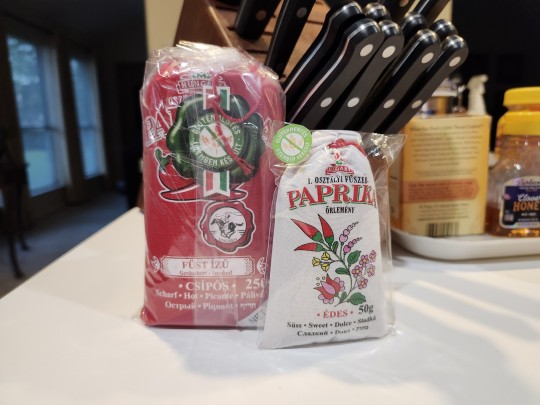
(Both of these I had to order online.)
Next, is another very important addition. As youre gathering your basic cornerstones of cooking (namely yellow onion, roma tomato, and garlic for this recipe) you may find yourself passing up on something that could vastly improve your dish. I'm talking, of course, about Hungarian Wax Peppers. These peppers range in heat, from meak and mild to slightly hotter than you'd average jalapeño. As per instruction, you should only use one. But on my end, I found the single pepper to be a little underwhelming, and I had trouble picking out it's flavor. So, this year, I'll be using two of them.
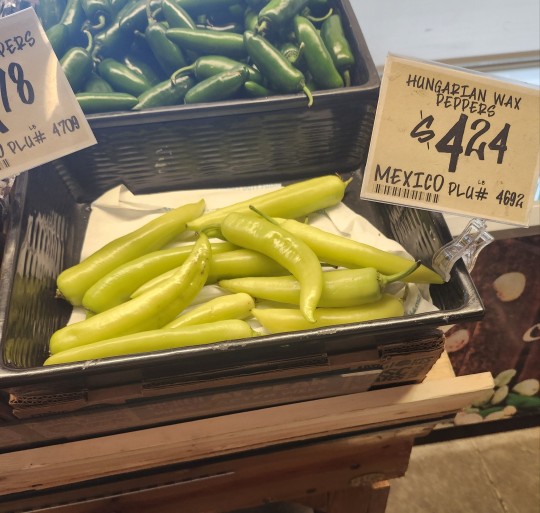
I got these from Central Market, an upmarket gorcer on Westheimer. They're a cousin of HEB, and you can find one or two in every major city in Texas. If you're elsewhere, try an alternative like Whole Foods, or try to find a European or International food market in your area.
Next, let's talk chicken. You can't have Chicken Paprkiash without the chicken, after all.

You're going to want to go with dark meat cuts for this. Traditionally the dish would use a mix of legs and thighs. Personally, I suggest using only the thighs, which you'll want to get bone-in and skin-on. The thigh provides a flater surface for browning than the leg, as well as more meat.

(A note on food safety, raw chicken will usually only last 2-3 days in the fridge. So you'll want to grab that fairly close to the day you're actually cooking this. If not, you can do what I'll be doing, and sticking it in the freezer until about 24 hours before I start cooking.)
So, as you gather your meat, produce, and spice you're probably asking yourself, "what on Earth am I going to be eating this with?" And the answer to that is spaetzle! A popular dumpling present in lots of Central European cooking, this is exactly what you need to tie this all together.
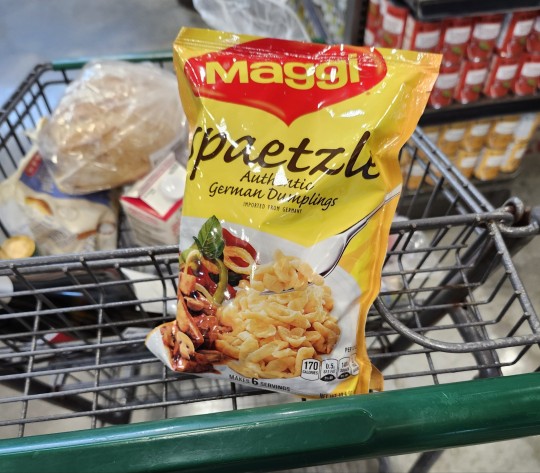
Now, while you should be able to find some in the international isle of most major grocers, you might also have to visit an international food store, or perhaps something more upmarket. If none of these options work, then there are a variety of other side dishes that work just as well. Egg noodles are a very popular choice, and in my very American attempt last year, I found that mashed potatoes work especially well.
Now that you've got all these things together, you're very nearly done. All that's left is the thickener. Paprikash is thickened using a blend of flour, heavy whipping cream, and sour cream. We'll get onto preparing this mixture in my post on actually cooking the paprikash, but until then, acquiring them should be a cake walk at any place food items are sold.
Now that will conclude the actual grocery list for just the Paprikash itself, but I do have one more pointer on how to really liven up this meal. Now, if you're under 21 or if perhaps you take after our dear, depraved, beloathed Count
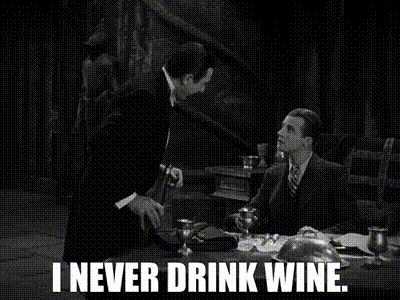
Then you can skip this next bit. As a wine professional myself, I find that a well paired glass can add a tremendous flare to nearly any already great dinner. In the case of something like Chicken Paprkiash, and keeping with the Central European theme, I could hardly think of a better match than a good German Pinot Noir, also known as a Spatburgunder. Pinot from Germany typically has a very light body and a refreshing acidity that plays very well with the rich and creamy sauce of Chicken Paprikash. The palate of earth and red fruit should always pair nicely with the smoke of the paprika, as well as being a general good partner for any chicken. I myself am going with this 2020 Rheingau from August Kesseler.
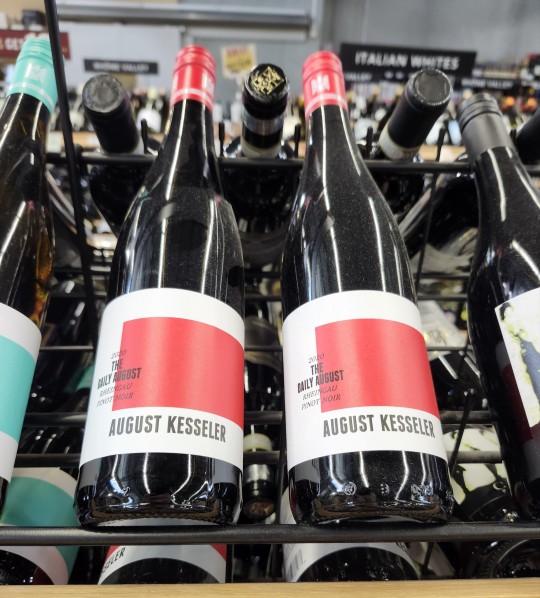
And with that, we are done! Hit those checkout isles and make sure to get home before dark. Terrible things have sway over the world once the sun has gone down. So if the crowd does keep you locked up until nightfall, make sure to graciously accept any crucifixes given to you by kindly, elderly grandmothers and inn keepers. But whatever you do, make sure to pop in on Friday, when I'll be sharing a step by step guide on taking these ingredients and turning them into a dinner that will make our good friend Jonathan go red as a fire truck!
Happy Dracula Week everybody!

747 notes
·
View notes
Note
Reiji's headcanon please as you did with Shuu!!!! I need them😭😭
— reiji headcanon's
omg thank you for enjoy! and since you ask, i came to deliver!!! and a little of my art as well!
tw: this post has nsfw content (+18) , so if you dont like it dont read it!!

this draw came out so much better than i thought, reiji is so fun to draw i love him so much!!!
his looks and selfcare
for start, reiji, unlike shu, do enjoy taking care of his skin and hair, at the begining of reiji's teen years, some acne began to pop out, and could'nt stand the fact that shu did not have any acne, not even once, so he started to take care of it, he often buys expensive lotion, soaps, and other skin creams, he totally watch tutorials on how to clean his skin properly, and always tries new suncreens on the market.
and i think that reiji does also buys expensive shampoo's and conditioner, he need it for his dry hair, so he totally buys profesional stuff. he prefers probably scents like jazmin, wooderish, also honey... even maybe lavanda.
and bc he cares a lot for his appearance, he showers very often, at least his body, reiji washes his hair like four times a week. and a little detail is that when he wash his hair, reiji uses hot water, but when he showers only his body, reiji uses cold water.
and to keep himself good looking reiji excersive sometimes, like two times a week and its intense, no one really notice bc he does it in his room.
and when it come to clothes, reiji does enjoy fancy clothes, i like to think reiji go through a face where he was looking for his real aesthtetic, he tried vintage, victorian stuff and in some point he tried the bad boy aesthetic, he find it a little too much casual for him, until he reached a more refinated, fancy but not too flashy style. even so he loves the turtle neck sweaters.
i think reiji is very aware of how handsome he is, his face is similar to his fathers, meaning, a sharp jaw and having a pretty nose, wich bone stand out a little. id say his nose and his eyes are the most atrative thing about his face. love a big nose on reiji, and his eyes are the most similar to his father, with that magenta color and a very intimidating gaze. In addition to having slanted eyes like his father, reiji gaze is like that of a cat, a little arrogant and seductive.
and for his body id say reiji is more of a slim kind of body, he has some good muscles for working out, reiji has good arms and shoulders, but his hands are really pretty, has long fingers and well treated nails. and as shu he also has a prominent v line, but reiji waist is more small.
reiji also takes good care of his body hair, the man shave for having a good smooth skin everywhere, yes, everywhere. and as shu, has that thing that dont let him grow a hole beard so he often shave it.
random stuff
soo... reiji is a little freak and you can't change my mind, he definetly has some obsessions and cant get over it, he just love things much he cant live without doing it, and to begin with one thing is his obvious collection of fancy plates, cups, teapots and has a little collection of rare spoons. reiji puts them in diferent parts of the manor just to look at them everywhere he goes, and he does not use any of them. he cleans them once a week.
and speaking of his obsessions, reiji has a secret but popular social media where he post is collection, he is very famous and dont show his face.
and he totally has OCD when it comes to order, without realize reiji is always ordering everything symmetrically and harmoniously to the eye, even when it comes to food, reiji orders the food on the plate in an elegant and orderly way.
also, i think reiji dont eat half of what he cooks, he prefer cooking than eating, but he enjoy's more doing desserts or really fancy meals. he also post this in his secret famous social media.
reiji is the kind of ADHD people that needs to do things right away, like the first thing in the morning to do is do his bed, when he finish cooking he cleans everything, when he take off dirty clothes he does laundry instantly, and like that with every little activity he does. maybe bc his mind is a little complicated and if he does'nt do something right away he might become anxious.
i think that bc of reiji doing ocasionally excercise, for some reason, reiji does not stretch his muscles before or after exercising, which causes him to cramp at the worst times, when he is in class, when he is studying or even while sleeping, on those occasions he is still asleep but cannot wake up completely, which causes his cramp to only extend until he wakes up from the excruciating pain.
i think reiji also has photografic memory, ofc bc of his childhood he memorize a lot of book and it just became something normal to him. he can remember every little detail he read, hear's or see's. having an almost perfect memory.
and maybe something cruel, but reiji hates animals, he has killed a few with his bare hands. he cant stand them, but secretly likes some cats.
i think that reiji has a secret shelf full of romantic books, the man loves romance novels. he read them before going to sleep.
and even if he does'nt get along with his brothers, reiji always takes píctures of their "good" moments, like ayato's matchs, subaru's plants, dinners or bals in the demon world.
nsfw
oh and this man? in bed? lord have mercy.
for starting, reiji has a big dick, straight foward, he is big, i cant deny it. its long but not so thick, and when hard it looks up proud and shiny. only one big vein that comes from his croch. just hot. 18.5 cm and if he is really horny he can get to 19. wild.
reiji is totally dominant, but for the right person he is such a bottom, a power bottom tho. reiji dont like the feeling of being dominated and controled, but he does enjoy when someone put him in his place, mommy issues thing.
oh, and when reiji is interested in someone, is really... slow.
i like to think that reiji, for his childhood and the little love he recieved, he does not quite undertand how to express correctly how he feels, and speaking of a vampire its double hard. reiji craves for having something close to affection, so he always watches how people or other vampires in love interact, but he does not belive that love is something a vampire can feel. deep shit i know.
the only thing close to reiji giving affection is by acts of service, he would spoil you without notice. if you two live together reiji will be around you everytime he can, and if he feels confortable enough, he will start to invade your personal space to make you nervous, or to make a reaction out of you. a at sometime he would'nt realize he is invading your personal space.
like if in the morning your shirt it's not buttoned properly, he would come really, really close, and button it right. all of that while looking into your eyes, and amazingly, building sexual tension. after that he would just act normal and shit. such an ass.
in other occasion, like if you two are in a casual conversation, reiji would come closer and just take a little eyelash off you cheek, but he gets so close that you can feel his breath while telling you "just... keep steady hun..." and also would just do that thing where he puts your hair in place and touch your skind with delicacy.
and when you kiss him, bc he would not start it, reiji would be so amazed, since the firts kiss he would kiss you any place when you two are alone. and after every kiss, reiji smile warm and softly at you, cute.
and more into that, reiji would devour your mouth, but he is imponent about it, meaning he like to surprise you while kissing, bc he loves to get your reactions. i think that while you two kiss reiji is touching your lowers back to push you againt him, would smile during the kiss and then pull your hair a little to look into your eyes. he likes the feeling of you being his.
"what? wanting more i see...?" and his little cocky smile is everything.
and if the kiss got heated, reiji would push you to anything to be on top of you, he loves that, being on top of you.
i think reiji is embarresed of being sucked off, mostly bc i also think reiji is very... vocal during sex. and a little more sensible than normal. and the little times you get to suck him reiji woud stop you at some point to give you pleasure now. and he is a dick about that too. but he stop you bc he dont want you to see him breaking during his climax, the man is a little shy.
reiji likes bending you, putting your knees in your chest while giving you oral, and he does it right, he gets how the female anatomy works so he knows what he is doing, also loves to hear you plead him to make you cum, but sorry for you, reiji loves edging you... a lot.
"not yet darling... keep it a little more.."
oh... and the nicknames, he say thems with a low and seductive tone that would literally would make anyone weak just to hear. amen.
and ofc, he can make you squirt, the man know things.
and about his favorite positions, reiji loves bending you, making your body hurt a little by how strength he puts into his grip on you. specially the one where you are on your back, with you anckles in his shoulders, and he just press you on the bed hard. he wants to be so deep on you that just thinking about it makes reiji tremble. he find being inside you something special, he doesnt do it just for having sex, the man wants to feels the conection, deep shit for him.
i think reiji loves every position he gets to see your face, but he needs to be on top, just love to see you so little under him.
i also think reiji is very versatile with the speed the puts, like it depends on the mood, if he is very horny and needy he would break you, he is fast and hard, loves to hear his balls slap your ass in every trust, reiji would smack you ass sometimes and definetly slap your face during it, after that he would kiss you hungry and stick his fingers in your mouth. in other moments reiji can be more passionate, like more romantic about it, but the thing that reiji keep doing it at every mood, is that he keep eye contact.
and god have mercy bc reiji has some good precious eyes.
reiji loves looking at your eyes, doesnt care if you look back at him, but will force you to look at him if you are about to cum.
"just like that love... give it to me... let me see you love.."
and is into it for creampies, he just loves the idea of filling you up as many times as his and your body can handle. and cums a lot, probably bc he dont masturbate too much.
"yea?? ill give it to you love... take it all..."
another position he might like would be maybe standing up or againts a wall, just loves to see you trying to hold onto something but failing and just hold him for support, he loves when you touch him, in any kind of way tho. but also bc he loves to see your legs tremble.
thats a little detail i like, reiji does'nt get satisfaced if your legs dont tremble when you cum, or during sex, he likes to feel how they tremble, see them giggle and lost its strenght, makes reiji feel powerfull bc of how he can make your body break. but does'nt say it out loud.
and the man dont get tired like... never, but do knows his limit, and his aftercare? maybe the best one. if you need water, a candy, food, cuddles, a bath, reiji will make it for you, instantly, dont doubts. and the cuddles are so cute, he will give you a masage and maybe give you oral again, he cant keep his mouth away from you.
the man just want you to feel good, and he knows how to do it. makes reiji feel powerfull.
── more of my content here!
#diabolik boys#diabolik lovers#reiji sakamaki#shu sakamaki#ayato sakamaki#diabolik lovers kanato#diabolik lovers oc#diabolik lovers ayato#laito sakamaki#diabolik lovers smut#sakamaki reiji#diabolik lovers reiji#sakamaki family#diabolik lovers laito#diaboys#diabolik lovers subaru#shu sakamaki smut#diabolik lovers shu#diaboik lovers smut
406 notes
·
View notes
Text
The main thought ringing in my head at the three-quarter mark of Jenny Nicholson's Star Wars Hotel video is how badly Disney missed the mark on not targeting the demographic of LARPers, cosplayers, and RenFest nerds as opposed to... whoever the hell they were actually targeting, with that combination of experience and price point.
Like. Not to further out myself as a massive goddamn dork, but there was a span of nearly ten years where I was going to the Ohio RenFest at least once a season, every season. And even there, the years where I went in some form of costume and played along with the actors as opposed to wearing jeans and a t-shirt, my experience was so much richer. There was such a different level of banter and playfulness and entertainment when I actively leaned into the immersion. I had so much fun interacting with the shopkeeps and cast members as an elf or random Fantasy Medieval Maiden, because they saw the costume and on some level went, "You! You are One Of Us!" and matched that energy, and thus gave me the chance to match it in return.
(One year, early on, when my "costume" was a frilly blouse, leggings, boots, elf ears, and a hastily sewn cloak, I had a random older gentleman run up to our group, press a gold coin into my palms, kiss the back of my hand in a very respectful and courtly manner, and disappear into the crowd. No context, no further story or plot or interaction, but almost fifteen years later I still have that gold coin on a shelf of tchotchkes.)
Watching every time Jenny tried so desperately to lean into the Galactic StarCruiser/overall Star Wars experience, to actively engage with the story and the characters, only to be lowkey ignored or actively rebuffed or scorned, legitimately broke my heart a little. (The bit in the experience finale where she was like "it felt like we were supposed to respond somehow, but I didn't because it was embarrassing, which is its own form of Force torture" was simultaneously hilarious and extremely relatable and incredibly sad.) Setting aside the issues with the app and tech, let alone the refusal to address legitimate complaints until she took to Twitter, not even getting a hint of reciprocal interaction from the actors when your choices supposedly matter in your overall experience would be so incredibly disheartening.
Ohio RenFest tickets were about $20 when I started going in high school, plus whatever food and merchandise you wanted to buy. Nowadays, even with inflation, they're still only $35 for adult tickets, which gets you access to everything, and you can absolutely get a full day's experience out of that with only the additional cost for food and beverages. I cannot fathom spending six thousand fecking dollars for two days ("two dollars per person per minute" will live rent free in my head for a while) on what is supposedly an immersive experience, marketed as living out your Star Wars story, only to get the absolute bare minimum in return. It really feels like such an indicator of how modern-day Disney is willing to cut corners as much as possible while leaning on brand recognition, and especially on nostalgia, in order to milk every last red cent out of their customers, until they run out of both money and goodwill. And that is so, so incredibly sad.
#life with ladytemeraire#Star Wars#RenFest#Ren Faire#my maunderings#Jenny Nicholson#I have no idea how to tag this#I loved this essay but it made me both sad and furious#literally every suggestion she made as a form of improvement would have been better than the actual thing#Disney
598 notes
·
View notes
Note
Is there a story behind China's one child policy that makes it not as horrifying as western media claims?
The defining feature of China's development for the past 70 years has been the urban-rural divide. In order to develop a semi-feudal country with a very low industrial level into an industrialised, socialist nation, it was necessary to develop industrial centres. To 'organically' develop industrial centres would have taken many decades, if not centuries of continued impoverishment and starvation, so programs were put in place to accelerate the development of industry by preferentially supporting cities.
Programs like the 'urban-rural price scissors' placed price controls on agricultural products, which made food affordable for city-dwellers, at the direct expense of reducing the income of rural, agricultural areas. This hits on the heart of the issue - to preferentially develop industrial centres in order to support the rest of the country, the rest of the country must first take up the burden of supporting those centres. Either some get out of poverty *first*, or nobody gets out of poverty at all. The result being: a divide between urban and rural areas in their quality of life and prospects. In order to keep this system from falling apart, several other policies were needed to support it, such as the Hukou system, which controlled immigration within the country. The Hukou system differentiated between rural and urban residents, and restricted immigration to urban areas - because, given the urban-rural divide, everyone would rather just try to move to the cities, leaving the agricultural industry to collapse. The Hukou system (alongside being a piece in many other problems, like the 'one country two systems', etc) prevented this, and prevented the entire thing from collapsing. The 'one child policy' was another system supporting this mode of development. It applied principally to city-dwellers, to prevent the populations of cities expanding beyond the limited size the agricultural regions could support, and generally had no 'punishments' greater than a lack of government child-support, or even a fine, for those who still wanted additional children. Ethnic minorities, and rural residents, were granted additional children, with rural ethnic minorities getting double. It wasn't something anyone would love, but it served an important purpose.
I use the past-tense, here, because these systems have either already been phased out or are in the process of being phased out. The method of urban-rural price scissors as a method of development ran its course, and, ultimately, was exhausted - the negative aspects, of its underdevelopment of rural regions, began to overwhelm its positive aspects. So, it was replaced with the paradigm of 'Reform and Opening Up' around the 1980s. Urban-rural price scissors were removed (leading to protests by urban workers and intellectuals in the late '80s), and the Hukou system, along with the 'one child policy', were and are being slowly eased out as lessening inequality between the urban and rural areas make them unnecessary. Under the new system, the driver of development was no longer at the expense of rural regions, but was carried out through the internal market and external capital. The development paradigm of Reform and Opening Up worked to resolved some contradictions, in the form of the urban-rural divide, and created some of its own, in the form of internal wealth divisions within the cities. Through it, over 800 million people were lifted out of extreme poverty - almost all of them being in rural areas - and extreme poverty was completely abolished within China. 'Extreme poverty' can be a difficult thing for westerners to grasp, wherein poverty means not paying rent on time, but to illustrate - many of the last holdout regions of extreme poverty were originally guerrilla base areas, impassable regions of mountainside which were long hikes away from schools or hospitals, wherein entire villages were living in conditions not dissimilar to their feudal state a century before. These villages were, when possible, given infrastructure and a meaningful local industry accounting their environment and tradition (like growing a certain type of mountainous fruit), or entirely relocated to free government-built housing lower down the mountain that was theirs to own. These were the people the 'one child policy' was aiding, by reducing the urban population they had to support. Again, there were exemptions for rural and ethnic minority populations to the policy.
Even now, Reform and Opening Up is running its course. Its own negative aspects, such as urban wealth inequality, are beginning to overcome its positive aspects. So, the new paradigm is 'Common Prosperity', which will work to resolve the past system's contradictions, and surely introduce its own contradictions in the form of chafing against the national bourgeoisie, as it increases state control and ownership of industry, and furthers a reintroduced collectivisation. Organising a nation of well over a billion people is not simple. It is not done based on soundbytes and on picking apart policies in the abstract for how 'dystopian' they sound. It is an exceedingly complex and interconnected process based on a dialectical, material analysis of things; not a utopian, idealist one. What matters is this: those 800,000,000 people now freed from absolute poverty. The things necessary to achieve that were, unquestionably, good things - because they achieved that. They had their negative aspects, as does everything that exists, but they were unquestionably correct and progressive things.
1K notes
·
View notes
Text

This month, Olena Vladymyrets, a Holodomor witness from the Vinnytsia region,celebrated her 95th birthday. Ms Olena was born on November 4,1929. She is the only one of 3 daughters of Oleksandr and Marta Tsvylyk who survived the Holodomor. Photo from Nina Vladymyrets' Fb page. "We lived in Tomashpil village in the Khmilnytskyi district, Vinnytsia region.There were 3 of us: the eldest, Larysa, born in 1927; me, in 1929; the youngest, Mariyka, in 1932. Both of my sisters didn’t survive. Mariyka was only 5 months old," she told our museum staff in an interview. During the Holodomor, she was very young, but she heard from her parents that before collectivization, people lived decently. "Those who worked, they lived..." But then, all their bread was taken away. "You know, as they used to say: 'Lenin told Stalin to take away the 'surpluses' but Stalin thought: take everything to the last crumb!' And so they did. My mother managed to earn a small amount of grain and put it in a pot to cook. She placed the pot in the oven, covering it with cauldron of water as if she were only heating the water. Activists broke in, poured out the water, removed the small pot of grain, and dumped it into their bag. Neither tears nor pleas helped. They took everything from everyone, and that is how the famine began." In 1946-1947, Olena Oleksandrivna experienced yet another man-made famine. "Mother and five of us, children, (four were born after the Holodomor) were already without a father (he died in the war). In the winter of 1947, Mother travelled to Western Ukraine seven times to trade some household goods for food." Ms Olena recalls. "She took all the essential items we had at home, including linens, towels, and various other things. It was a hard journey; they travelled in boxcars,got caught,and were forced off. And I, at 16, stayed home alone with the children. When Mum returned from the West, she brought a bit of grain. We kept a little for ourselves,then took the rest to the market in Bykiv, 8–10 km away. There, Mum sold the grain and bought clothes—jackets, skirts, dresses, scarves to go back to the West, as we had already sold out everything we had. I looked at those clothes and wanted a dress or a skirt so badly; after all, I was a girl! But what could I say to my mother? There were still younger children at home who were asking for food…" Today, Ms Olena, along with all of Ukraine, is going through another hardship—the war unleashed by Russia. Despite her age, she helps her daughter Nina make trench candles for Ukrainian soldiers. In addition, throughout the summer, the women made homemade treats for the soldiers they grew themselves: pastila, adjika, pickled cucumbers, tomatoes, fruits, vegetables, and berries! Although our birthday celebrant needs a walker to move, she actively contributes to volunteer work. She rolls cardboard for candles, peels fruits and vegetables, and assists her daughter as much as she can. Her daughter has also sent five drones to the front lines and provided medications, tourniquets and other essential items requested by the soldiers. We wish Ms Olena health,a long life,and a speedy Victory,which she dreams of more than anything else! May her dream come true! —Holodomor Museum
155 notes
·
View notes
Text
Hetalia characters with dishes typical for their country - part 1 (part 2 here)

Italy: Maritozzo (cream bread) -> This Roman milk bread is said to be dated back to times of Ancient Rome. The baked good is filled with generous amounts of whipped cream and somtimes decorated with fruit or pistachio. Young man also used it in courtship by hiding jewellery or a ring in the filling.

Germany: Breze(l) mit Schokolade (chocolate dipped pretzel) -> A baked pastry with sweet or salty toppings, best known for its distinctive symetrical, knotted shape. Dipped in chocolate the soft pretzel is a popular snack at funfairs and markets, but there are also small, crispy pretzels that are to be eaten like crisps/chips.

Japan: 和菓子 (wagashi; plant based sweet) -> Originally meaning "Japanese confectionery" the term now refers to a traditional dessert made from plant based ingredients. It's artful shapes are influenced by season, nature, or even poetry.

France: Quiche Lorraine -> A savoury tarte traditionally made with a filling of eggs, heavy cream, ham, and bacon. Today cheese is often added, though it is controversial among professionals. (In the drawing there seems to be leek added too which is not mentioned in the original recipe either.)

England: Scotch Egg -> Supposedly inspired by the Indian nargisi koftas, this dish consists of a hard-boiled or soft-boiled egg wrapped in pork (sausage meat) which is coated in breadcrumbs and then baked or deep-fried. Often served in pubs and a popular cold snack as well.

America: Hamburger -> A popular fastfood consisting of a patty (traditionally made from ground beef) between two halfs of a sliced bun. There are countless variations made with all kinds of additional ingredients and condiments, including expensive high-end versions with edible goldflakes.

Russia: пирожки́ (Pirozhki; stuffed bread) -> This popular street food is a baked good made from yeast-dough is typically boat-shaped and filled sweet or savory with meat, vegetables, fruit, jam or tvorog (an Eastern European fermented milk product with a consistency similar to curd cheese)

China: 小籠包 / 小笼包 (Xiaolongbao; steamed bun) -> Steamed dumplings made from leavened or unleavened dough traditionally filled with minced pork, traditionally eaten for breakfast. The top of the dumpling is closed by folding and pinching it. Authentical dumplings have at least 14 folds, preferably 18.
#aph england#aph america#aph france#aph russia#aph germany#aph italy#aph japan#aph china#hws italy#hws germany#hws japan#hws england#hws america#hws france#hws russia#hws china#hetalia#riva.edit#source in the source#full disclaimer I tried my VERY best to find everything but if I made a mistake pls let me know (politely)
160 notes
·
View notes
Text
How To Get Roughly 50 Notes On An Original Writing Post And Possibly Net A Single Reader
I had someone ask today how I get people to click through and read my writing, and I'm realizing that I've never actually made a post all in one place of everything I do to get a new piece of short fiction off the ground... so here you go! How to get (some) eyes on your work, even if it is not published anywhere of interest and you don't have a marketing team behind you.
The #1 thing is presentation. You want to get people's attention, and once you have it, convince them to keep paying attention. Fortunately, people tend to be both reasonable and predictable, which means all you have to do is follow The Formula.

(original post link)
Here's the formula from the above post broken down:
[giant horizontal title card, preferably animated to catch the eye] OR [a few tasteful parallels, if you're good at parallel posts]
TITLE (linked to where you can read the piece) / wordcount
a quote that is representative of the tone, themes, prose style, and/or the "promise of the premise"
A longer pitch, featuring the overall subject of the piece (transsexual reality TV drama), any comp titles (Detransition, Baby), the main draw (in this case, watching trans people be awful to clueless cis people), major themes (performance), and any other promises you'd like to make (food romance and tigers). You can see that the quote I chose delivers on the promise of trans people intellectually outperforming cis people-- if I were a reader, I would be more likely to trust that the rest of the pitch was accurate based on that assurance.
If you have any positive reviews on your piece, say so. If it has won any awards or contests, say so. If your work has made people cry, Doja Cat - Say So. Always. Generally speaking, more personal and more detailed is better, but keep it to one or two people-- e.g. "when I gave this to my S/O to read he shot milk out of his nose so far I had to go clean under the couch" or "my favorite review of this piece is the reader who said they read it chapter-by-chapter under their covers because they wanted it all to themself." This should be one sentence.
Depending on where the story is published, what you usually promote, etc., it may be worthwhile saying the story is free. Use your judgment on whether the reader can tell.
I also like putting my links at the bottom so someone seeing this on a friend's dash can easily track me around the 'Net. They make me look more professional (I now include a link to my website) and they visually balance the post, in my opinion. This post also happened to have some additional links for bonus content.
This is not as high stakes as it seems. I'm not 100% happy with the pitch here, and I'm not 100% happy with the graphics I've used in other cases. These are some bones that help to sell the piece even when the details aren't as sharp.
REBLOGGING
When is the last time you read something the first time you saw it on your dash? I schedule reblogs of all important posts at least twice over the next 2-3 days, often three times so I can get the morning/afternoon/evening reblog. If your followers tend to be more active at certain times, go ahead and use those. In the past I've intentionally scheduled posts for times I knew more popular mutuals were active, and it has paid off!
I also schedule a reblog for a week and a month and sometimes even a full calendar year out, because I know there is going to be that person who tags the piece '#to read' and instantly forgets about it, only to get excited when they see it weeks later. I am very often that reader. The goal is to catch people when they're ready to read immediately, and this is a game of chance.
Every so often, I go through my entire #writing or #important writing updates or even just #popular tag(s) and queue two dozen posts before shuffling my queue to redistribute matters. This keeps my older work circulating, ensuring new readers get a chance to see older pieces and giving those older pieces another shot at dashboard space. (More on #popular later.) This sounds like a lot, which is why you have to space everything pretty far apart. Fortunately, this is the world's best site for cool things to reblog. I guarantee you that you can find something new you love to post in the meanwhile.
COPING WITH FAME
The post above is what I, a published author, consider "doing well" for a post about my writing on Tumblr. As of October 10th, 2024, over two years after its initial posting and over five years into my posting doggedly about my original fiction, it has 77 notes. More than half (43) are likes. Around half of the reblogs are me promoting my own work or the same very sweet person dutifully reblogging me every time I do so. Glancing through the reblogs now, I know of four people whom I can confirm have read it. Presumably, there are more who are completely silent and have never interacted with the post whatsoever. Genuinely: wahoo!! I am so grateful and happy for the attention and reception of my work.
This is the number one thing I suggest: focus on what you have, and not what you lack. Imagine your post from the perspective of an outsider: even one reblog means you convinced that one person to spread your art! How cool is that! This is also good advice because moping is simply not helpful; it will not get you more reads. (And no, neither will guilting others. Kill that vent post in your head!)
GETTING FOLLOWERS
I don't have that many followers. Of the followers I do have, people are very unpredictably active. When I hear about other people's follower counts I am consistently surprised, because people with half of mine will have fans and haters the likes of which I could not possibly dream of. I follow 500-follower folk who post "I ate a strawberry today" and get 6 asks ranging from "Wow I respect you so much for eating that strawberry" to "I'm going to come to your address at [REDACTED REDACTED REDACTED] and shove bananas down your throat for hating on my favorite fruit."
I point this out to establish three important things. 1) Be grateful for what you have (in my case, 0 anonymous hate asks about fruitpinions), 2) followers have far less impact on interaction than one might think, and 3) followers don't engage with the things you might like them to.
Think about yourself. Are you more likely to reblog a photo of a cat in a pumpkin (alright, here) or something advertising fifteen minutes' worth of writing, which could be, for all you know, bad? Or, for that matter, by a person you should not like to support? Reblogs on generically interesting things are 'safer' (unfortunately) than reblogs on art, and it makes perfect sense that people are skittish around the latter. People don't often reblog things they haven't read, and nobody can reblog every artpost on their dash. Having someone else put it there, however, is incredibly powerful—someone's vetted this post as Worth a Reblog, after all. Having more followers allows for much more of this.
(Followers don't guarantee any one sort of interaction, but having more of them is rarely bad. Rarely.)
Across my most popular posts, one theme becomes very obvious: people like things that apply to them or their blog. I try to post writing advice/opinions/memes every so often, because I know I have a loyal base of writerfolk who like to see that from me, and it's "easier" to reblog than my writing. This is simply the nature of the universe. I used to pretty frequently go into the #writeblr tag and check out what was recently popular so I could figure out how to serve the same base, and from time to time it worked.
You're welcome to examine the list of #writing posts that made it to 100 notes, because each tends to have a notable reason behind its success: a reblog with an exceptionally good review, a contest win, a wordcount that lends itself to pasting the whole thing in one go.
(Posts about my book's release are a notable exception, in part due to Blaze and in part due to my absolutely relentless flogging of their reblog buttons during the ~year of promotion. Also in large part to a dedicated circle of friends who passed the post around nonstop! Thank you so much!!)
A lot of people will tell you to attempt covert reciprocal promotion. You know—reblog a lot of stuff, in the hopes that people will reblog yours. If I could change one thing on Tumblr, it would be this: the culture that quietly encourages disingenously interacting with other people with a secret True Goal in mind. (On the autism website.)
Please, for the love of all that is good and holy, do not do this. If you comment on other people's work, do it because you're happy to do so. When I released Paper Tigress, I went through everybody else who responded to the same prompt and read their work, because I had the day off and I was curious. This has led to Paper Tigress having more comments on Reedsy than one of my contest winners, and even outranking the shortlisted story in the same prompt category. However, this would have been a waste of my time if I did not genuinely enjoy reading the other stories. I read 80+ stories, taking several hours, and gained 30 comments from the venture (half my comments are my responses).
Crucially, I do not promote other writers' work on Tumblr in the hopes of them reading or boosting mine. This is the #1 tip I see thrown around that I viscerally disagree with. While, again, I am grateful for engagement with my work regardless of the context, I do not want people suffering through my work in the hopes that I will promote them. I work a full-time job, and my reading calendar is perpetually overbooked, including with work by my absolute best of friends. Even if it wasn't, I think it would be quite insulting if I were posting works in the hopes that someone would choke it down like medicine. I post what I think is good so that people can read and enjoy it. If you are not enjoying it, I do not want you to feel as though you have to read it. My aim is to give to others what my favorite authors have given me, which is most certainly not A Bad Time Spent Being Dishonest In The Hopes Of Getting Something Back. You have better things to do with your time. Please be honest.
CONCLUSION
Realistically, the readers I have, I gained through being a published author for five years promoting my behind off on Tumblr, the least forgiving social media for promotion. People like it when you have a book they can buy, especially if it has Goodreads reviews that make it look like you have been vetted for them. Many people who follow me have read only Something's Not Right and nothing else. (Many people who follow me have read everything but Something's Not Right.) I have posted dozens of pieces on Tumblr and Wattpad (and AO3). I gained a small number of readers writing and posting fanfiction for the Locked Tomb Tri(?)logy, even though I marketed it absolutely terribly.
Just keep writing. Keep writing, keep posting, and keep making sure everyone who follows you knows you write. And keep writing because you want to. There's no better advice than that.
#writeblr#writeblr advice#writeblr tutorial#writeblr tips#writeblr community#writing advice#writers on tumblr#important writing updates#txt
155 notes
·
View notes
Text
Thinking about Disney and how we talk about Cultural Representation


(concept art by Scott Watanabe)
Old essay originally written on Cohost in November 2023. With additions.
With all the promo stuff about Disney's upcoming animated film Wish, I can't help but think about Raya and the Last Dragon again. I spent a year intensively researching things about that movie and the discourse surrounding it for a series of videos on Xiran Jay Zhao's channel, and oh boy did that reveal a lot about the current way we talk about cultural representation in casual media criticism.
Lately we've grown a habit of looking at signifiers to culture, things like a cultural dish, a nod to a martial arts style, a piece of clothing, maybe a hairstyle, a weapon and so on, and then projecting a bunch of intentions onto the work regardless of authorial intent. I witnessed this a bunch of times in discussions surrounding Raya and the Last Dragon.
You basically get a bunch of 4d chess-style justifications for the lazy implementation of culture in Raya.
random examples cuz there's too many to name:
The movie will do something like make the leaders of the villain nation women, and people immediately assumed it was some kind of bespoke reference to Minangkabau matriarchical society.
the art book of Raya specifically stated that they purposely misplaced things as a stylistic fantasy choice "we could take something that is known and place it in an unexpected location, like coral in the desert and cacti in the snow". But when people saw a water buffalo placed in the desert they assumed it was some super clever environmental story decision.
The movie will tell you it includes things like Borobudur, Angkor wat, Keris, and most people will take their word for it without hesitation. Never mind that Southeast Asians could barely recognize these nods to our culture through how amalgamated the designs are.
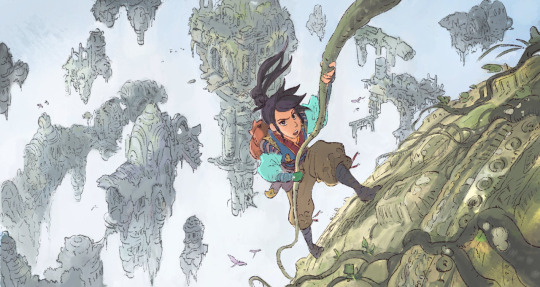
(early concept art by Scott Watanabe)
Moving forward, I think we need to talk less about "what" parts of a culture are being represented in these movies, and more about HOW they're being included, we need to ask:
What is this piece of media's relationship with the cultures it represents?
Because Raya and the Last Dragon is not a cultural movie, it's a monolith film pitched and written by white people and a Mexican director with 2 SEA writers added later in production to avoid backlash. Culture serves the purpose of aesthetic set dressing in the film, as opposed to something that informs its themes and characters.
it wasn't even initially pitched as a Southeast Asian movie. The white writers who pitched it were going for a vague East Asian sci fi fantasy story under the working title "Dragon Empire". Southeast Asian culture was an aesthetic change added much later.
This is what happens when a corporation tries to put representational value on a shallow aesthetic. Because of the way Disney constantly marketed Raya as this big authentic cultural film, it primes its audience to read cultural intention in the most benign details. And when we get lost in the details, we lose sight of the bigger picture.
Contextualizing Cultural media criticism
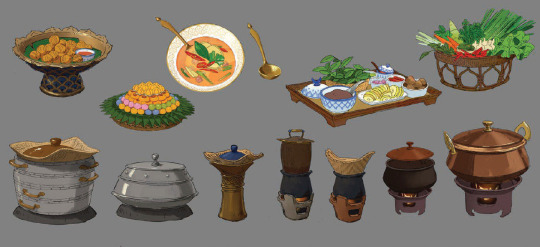
(visual development art by April Liu)
We need to start demanding more context in our analysis. The next time we see a reference to culture in media we consume, take a step back and ask what purpose it serves in the narrative. And most importantly!! What Is Its Relationship With The Culture It Represents? We shouldn't just accept things at face value.
start asking yourself,
through what lens is this cultural dish and its spicy flavors being presented to us? Are the customs surrounding the food being respected?
If martial arts or dance is represented, how is it translated in the adaptation? Are you getting generic hollywood-fu or are you seeing specific movements with purpose and motivation? Are the philosophies or spiritual contexts of these traditions present in the text?
Are the clothing, hairstyles, and presentation of the characters being de-yassified through a colonial filter? Is the non-conformity of the cultures' different framework for gender presentation being adjusted to fit a more recognizable binary?
If language is present, what role does it serve? Is it presented as other through being exclusively used by villainous beings? Is it being made a monolith as one "non-English" language?
is this temple actually a place of worship or is it just a set piece for a goddang Indiana jones booby trap action fight sequence
This way, instead of unquestionably defending a piece of media because a character wore a traditional outfit one time, or because some characters took their shoes off at a temple, or because there were Arnis sticks in that one fight scene, we can approach the text with a more nuanced and holistic understanding of how culture informs narrative.
To quote Haunani K. Trask (author of From A Native Daughter):
“Cultural people have to become political… Our culture can’t just be ornamental and recreational. That’s what Waikiki is. Our culture has to be the core of our resistance. The core of our anger. The core of our mana. That’s what culture is for.”
#ramblings#media criticism#jesncin cohost essay repost#working on the raya videos was so informative for how I approach cultural media criticism#like it really made me question what exactly I wanted from cultural representation
158 notes
·
View notes